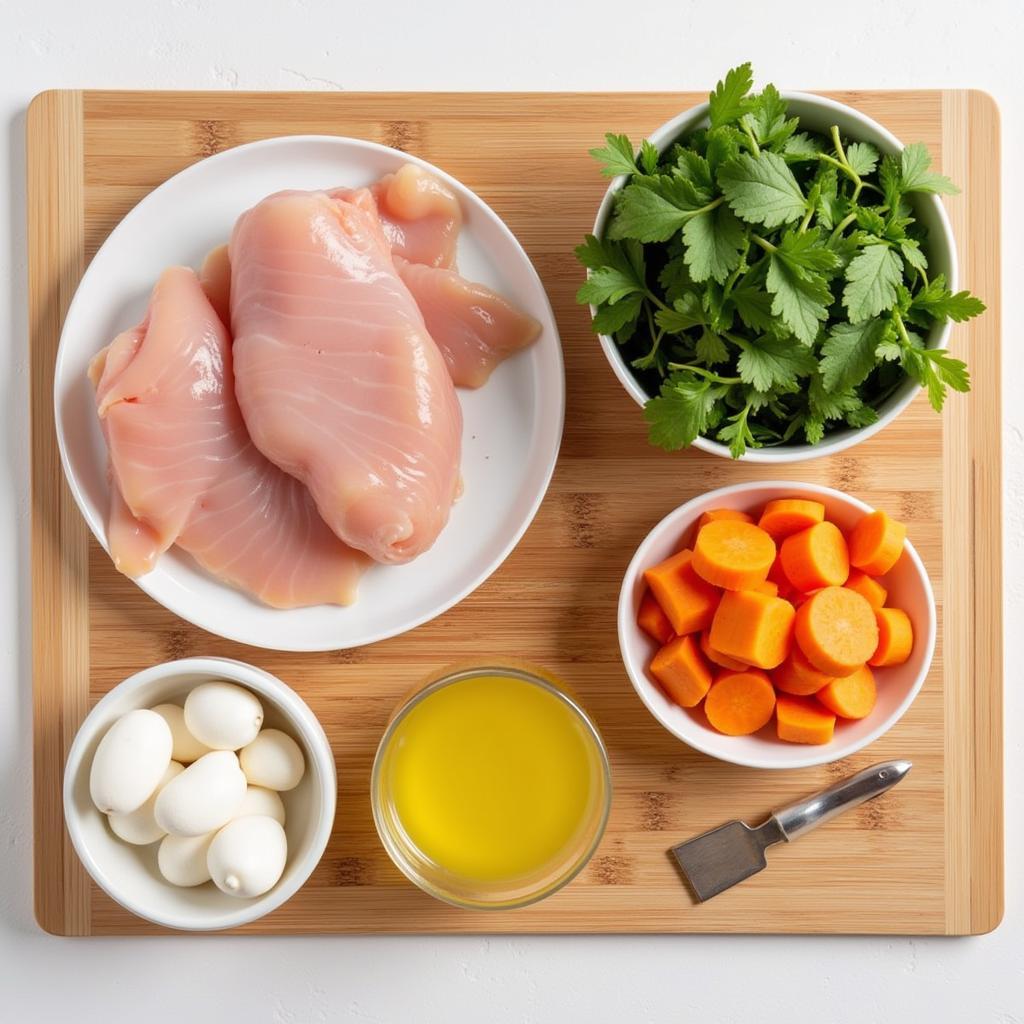Liver disease in cats can be a challenging diagnosis, but providing the right nutrition plays a vital role in managing the condition. Homemade Food For Cats With Liver Disease allows you to control the ingredients and tailor the diet to your cat’s specific needs. This article will guide you through creating nutritious and palatable meals that support your cat’s liver health.
Understanding Feline Liver Disease and Dietary Needs
A cat’s liver performs crucial functions, including filtering toxins, producing bile, and metabolizing nutrients. Liver disease disrupts these processes, impacting your cat’s overall health. A specialized diet is essential to support liver function and minimize further damage. This often involves restricting certain nutrients like copper, sodium, and protein, while ensuring adequate calories and essential vitamins. cat food for liver can be a starting point for understanding the dietary restrictions and recommendations.
What are the Key Nutritional Considerations?
When preparing homemade food for cats with liver disease, consider these key factors:
- Protein: While protein is essential, too much can strain a diseased liver. Opt for high-quality, easily digestible protein sources like cooked chicken breast, turkey, or fish. You can learn more about balancing protein and fat content in our article on high protein low fat cat food.
- Fat: Moderate fat intake is crucial for energy. Choose healthy fats like fish oil or chicken fat, avoiding excessive amounts.
- Carbohydrates: Easily digestible carbohydrates provide energy and can be helpful for cats with decreased appetite. Cooked sweet potato or rice are good options.
- Fiber: Fiber aids digestion and can help regulate blood sugar levels.
- Vitamins and Minerals: Supplementing with specific vitamins and minerals under veterinary guidance can address deficiencies common in liver disease. Be cautious with copper, as excess copper can accumulate in the liver. Our article on copper sulfate in cat food provides further information on this topic.
- Sodium: Restricting sodium intake is vital for managing fluid retention, a common complication of liver disease. Avoid adding salt to homemade food and choose low-sodium ingredients. Check our guide on cat food low in sodium for tips on managing sodium in your cat’s diet.
Creating a Balanced Homemade Diet
Developing a balanced homemade diet requires careful planning and veterinary consultation. Here’s a sample recipe to get you started:
- Cooked Chicken Breast: 100g
- Cooked Rice: 50g
- Steamed Carrots: 25g
- Fish Oil: 1 teaspoon
- Vitamin B Complex Supplement: As directed by your veterinarian
 Ingredients for a homemade cat liver diet: Fresh, healthy ingredients laid out on a table ready to be prepared.
Ingredients for a homemade cat liver diet: Fresh, healthy ingredients laid out on a table ready to be prepared.
This is just a sample recipe, and your veterinarian can help you adjust it to your cat’s specific needs and create a personalized meal plan. You might find our article on special cat food helpful for more ideas and insights.
Monitoring Your Cat’s Progress
Regular veterinary check-ups are vital to monitor your cat’s response to the homemade diet. Track your cat’s weight, appetite, and overall well-being. Adjust the diet as needed based on your veterinarian’s recommendations.
“Nutritional management is crucial for cats with liver disease. Homemade diets offer a way to provide tailored nutrition that supports liver function and improves quality of life,” says Dr. Emily Carter, DVM, a board-certified veterinary nutritionist.
Conclusion
Homemade food for cats with liver disease can be a valuable part of their treatment plan. By working closely with your veterinarian and carefully selecting ingredients, you can provide your cat with the nutrition it needs to thrive. Remember to monitor your cat’s progress closely and adjust the diet as necessary. Providing a balanced, homemade diet shows dedication to your cat’s health and can significantly impact their well-being.
FAQ
- Can all cats with liver disease eat homemade food? It’s crucial to consult with your veterinarian before starting a homemade diet for your cat.
- How do I transition my cat to a homemade diet? Gradually introduce the new food over several days, mixing it with their existing food.
- What are the signs of liver problems in cats? Jaundice, vomiting, weight loss, and lethargy can be signs of liver issues. Consult your vet if you notice any of these symptoms.
- Is it expensive to make homemade cat food for liver disease? The cost can vary depending on the ingredients and supplements required.
- How do I store homemade cat food? Store it in airtight containers in the refrigerator for up to 3 days.
Situations and Questions
Scenario: Your cat has been diagnosed with liver disease and you’re overwhelmed with dietary information.
Question: What are the first steps to take in creating a suitable homemade diet?
Answer: Consult your veterinarian immediately. They can assess your cat’s specific needs and guide you on creating a balanced homemade diet.
Further Reading and Resources
For more information on feline nutrition, you can explore these resources on our website:
- Are you curious about specific diets for liver health in cats? Check out our article on cat food for liver.
Need support? Contact us 24/7: Phone: 02437655121, Email: minacones@gmail.com or visit us at 3PGH+8R9, ĐT70A, thôn Trung, Bắc Từ Liêm, Hà Nội, Việt Nam. We have a dedicated customer support team ready to assist you.